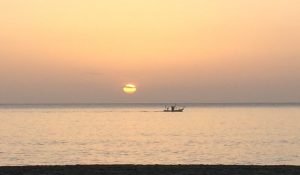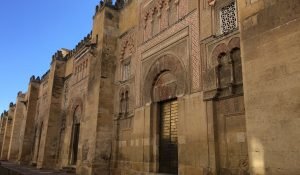El CAAC Seville, situado en la Cartuja, es un precioso monasterio que han sabido transformar perfectamente en un espacio de arte contemporáneo.
As you walk up to the CAAC (Andalucia’s Center for Contemporary Art), you might wonder if you’re in the right place. The expansive lawn and entrance to the former Monastery of the Cartuja is hardly the space you would expect to find some of the most contemporary art pieces in Andalucia. The history of the building, however, is worth checking out, as it creates the perfect juxtaposition with the contemporary works by Spanish and international artists.
The land around the present day CAAC has always been rich in clay thanks to its position next to the Guadalquivir river, and as the story goes, in 1248 someone saw the image of the Virgin Mary in the smoke from the huge kilns. This was the Virgin of the Caves, and from there they constructed a beautiful little Monastery in the area of Seville called La Cartuja. What I especially love about the Contemporary Art Center, is the fact that they’ve really preserved the architecture of the Monastery while transforming it into a museum space that adapts to the most relevant topics of today.
The courtyard, lined with trees, leads to what looks like an old church with a huge stained glass window that is striking against the blue Sevilla sky. Inside, as part of the exhibit “The Present in the Past,” we found the old wooden seats of the choir together with videos streaming contemporary film pieces. Next to a beautiful statue of Christ on the Cross, flanked by a grieving Mary and Joseph, is a modern work by Antoní Tapiés. The feeling you get as you turn the corners through this former Monastery is that someone has carefully chosen what to preserve, and where to place the modern works so as to respect both art forms as important and worthy, each in their own way.
The courtyard with it’s high arches and Andalusian tiles vibrate with the sounds from a video installation projected on the walls of a forgotten chapel. Turning the corner into another wing of the former sanctuary, there is a work that took me by surprise. Traditional Andalusian painted plates hang on the walls, others smashed on the floor. It was a striking image, especially living in Andalucia where these plates are such a part of daily life and decoration.
We continued past the huge chimneys, planted like fat bottomed watchmen in the courtyard, solidly standing guard and slightly ephemeral in the way that structures from the past often are; reminding you that nothing is quite as permanent as you’d like to believe. The temporary exhibits when we visited posed an even starker contrast to the setting of the former Monastery. The first “Agustín Parejo School” showed works from an active, radical and anonymous art collective that existed in Andalusia in the 80’s and 90’s.
We were especially interested in this exhibit because the group had centered their base of operations in Málaga. They played with language, created their own magazines, clothing and even television programs, as well as art installations and performances centered on the ideas of “anonymity/authorship, poetics/politics and image/text.” The images of our own city, in the decades following the transition into Spanish democracy, with all the economic struggles that ensued were very powerful, maybe more so in the long echoing hallway of the building.
In the opposite wing was “Remake Resnais”, a look at how the films of French director, Alain Resnais, have inspired a new generation of artists. My favorite part of this exhibit were the photographs by Candida Höfer. The artist depicted the Bibliotheque Nacionale in Paris with the idea that these places where people “collect, preserve, exhibit and generate knowledge” are somehow sacred. It was amazing to see how the empty spaces managed to look alive, and full of an expectant sort of energy, even though there were no people present in the images.
We ended our visit to the CAAC with a stroll through another courtyard with vines hanging in a forgotten sort of way that left me wondering if the whole space would be covered in those vines if no one had thought to make the Monastery into art galleries. We should also mention that the CAAC hosts flamenco nights, music festivals, as well as various workshops throughout the year. It’s a cultural space that is well worth the trip out to La Cartuja. We ruskommend a visit to the Centro Andaluz de Arte Contemporáneo with 5 boquerones. Architecturally and artistically speaking, this space is sure to stick with you long after your visit.






